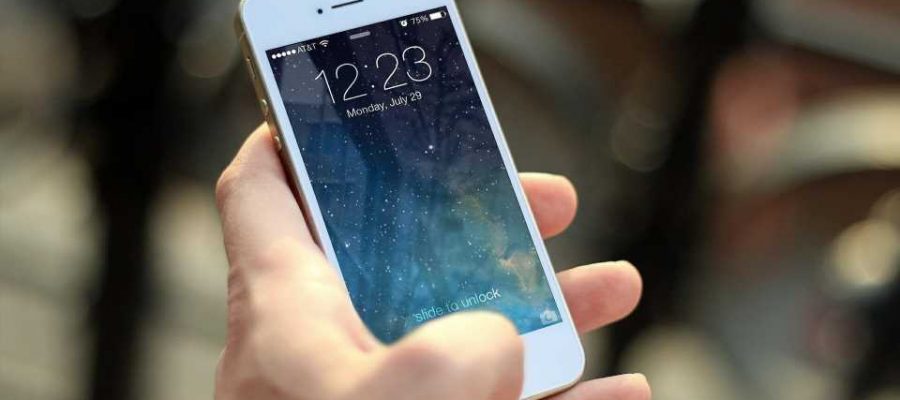
Nomophobia, or “NO MObile PHone PhoBIA” is when a person experiences fear or anxiety about not having mobile phone connectivity. Nomophobia is considered a modern phobia. It most likely stems from increased reliance on technology and concern over what might happen if you suddenly couldn’t access needed information. While some people may dislike the idea of going without their phone for prolonged periods, others experience fear or anxiety about losing connectivity from their mobile phone, leading to agitation, changes in breathing, and other symptoms.
Nomophobia is similar to other psychological conditions related to fears of certain things. It also shares a connection with other types of anxiety disorders. Research shows that several potential psychological conditions, such as social anxiety or panic disorder, may appear in a person before the development of nomophobia. However, it is still unclear if the disorder comes from an existing anxiety disorder or from a cell phone addiction.
Symptoms
Symptoms of nomophobia are similar to other phobias and anxiety disorders. They can include changes in breathing, trembling, sweating, agitation, and disorientation. Research shows that nomophobia could be developed due to the instant communication and instant gratification that smartphones provide. This can develop into addictive and compulsive behavior.
On the other hand, possible predictors of nomophobia can include obsessive thoughts and compulsive behavior related to a smartphone, interpersonal sensitivity (which is the ability to assess the abilities and traits from nonverbal cues in others), feelings of personal inferiority, social discomfort, as well as the number of hours of smartphone use each day.
A person should consider talking with a doctor if they believe they may be experiencing symptoms of nomophobia. Parents or guardians should watch for symptoms of nomophobia and contact the child’s pediatrician if they notice signs appearing. A doctor can provide a referral to a psychologist or other specialist to help diagnose and treat nomophobia.
Treatments
Since nomophobia is relatively new, treatments are currently nonstandard and involve behavioral therapies, support groups, self-care, and the use of medications (if deemed necessary). A doctor or psychologist will likely recommend treatment options similar to treating other phobias. The following are some possible options that a doctor may recommend if they suspect someone is living with nomophobia:
Behavioral therapies. A standard treatment approach for phobias includes a variety of potential behavioral therapies. These therapies help to address the underlying fears and beliefs surrounding the phobia. In the case of nomophobia, the therapies could help address a person’s fear of losing their phone, not being connected, and the implications of not having access to their phone. Some therapies for phobias include cognitive behavioral therapy. In this therapy, a person confronts the underlying thoughts that contribute to the phobia.
Desensitization (exposure therapy) and hypnotherapy. This approach involves gradually exposing a person to the thing they fear. In nomophobia, a doctor may expose a person to a lack of access to their phone. Similarly, hypnotherapy involves a therapist guiding a person through imagery to help them develop self-soothing techniques when confronted with not having access to a phone.
Support groups and self-care and practice. A person may be able to find a support group that helps to address the fear and anxiety associated with not having access to a phone. A person can practice self-care strategies on their own by learning more about what causes their phobia progressive muscle relaxation, which involves focusing on relaxing muscles in groups practicing different therapeutic breathing techniques. A person may also benefit from learning relaxation techniques. This therapy involves a combination of breathing techniques, exercises, and meditation techniques to help a person cope with not having a phone or other phobias.
The bottom line
Nomophobia is a growing concern that can affect mental health, and it appears most common in young people, though many phone users experience some degree of symptoms. If you regularly use your phone, you might experience a brief moment of panic when you realize you don’t have it or can’t find it. This doesn’t mean you have nomophobia, but if you worry so much about not having your phone or not being able to use it that you can’t focus on what you need to do, consider reaching out to a therapist for help because nomophobia can improve with treatment and lifestyle changes.
This story is part of Science X Dialog, where researchers can report findings from their published research articles. Visit this page for information about ScienceX Dialog and how to participate.
More information:
Naser, A.Y. et al. Nomophobia among university students in five Arab countries in the Middle East: prevalence and risk factors. BMC Psychiatry (2023). DOI: 10.1186/s12888-023-05049-4
Amer Hamad Issa Abukhalaf is a Ph.D. candidate and research assistant at the Florida Institute for Built Environment Resilience and a member of the Disasters, Trust, and Social Change Research Lab. He researches risk management and safety design with a focus on natural hazards, built environment, crisis management, and emergency planning. Abukhalaf is also a civil engineer and a structural designer by practice and has a master’s in executive management from Ashland University in Ohio. He is a member of the Hazard Mitigation and Disaster Recovery Planning Division at the American Planning Association and a Project Management Institute Certified Practitioner. In addition, Abukhalaf is a University of Florida registered hurricane expert and a University of Florida Outstanding Merit Award receiver for 2021. He has authored 24 peer-reviewed published papers in top journals in related fields, including the International Journal of Disaster Risk Reduction, Disaster Prevention and Management, and Natural Hazards.
Source: Read Full Article
